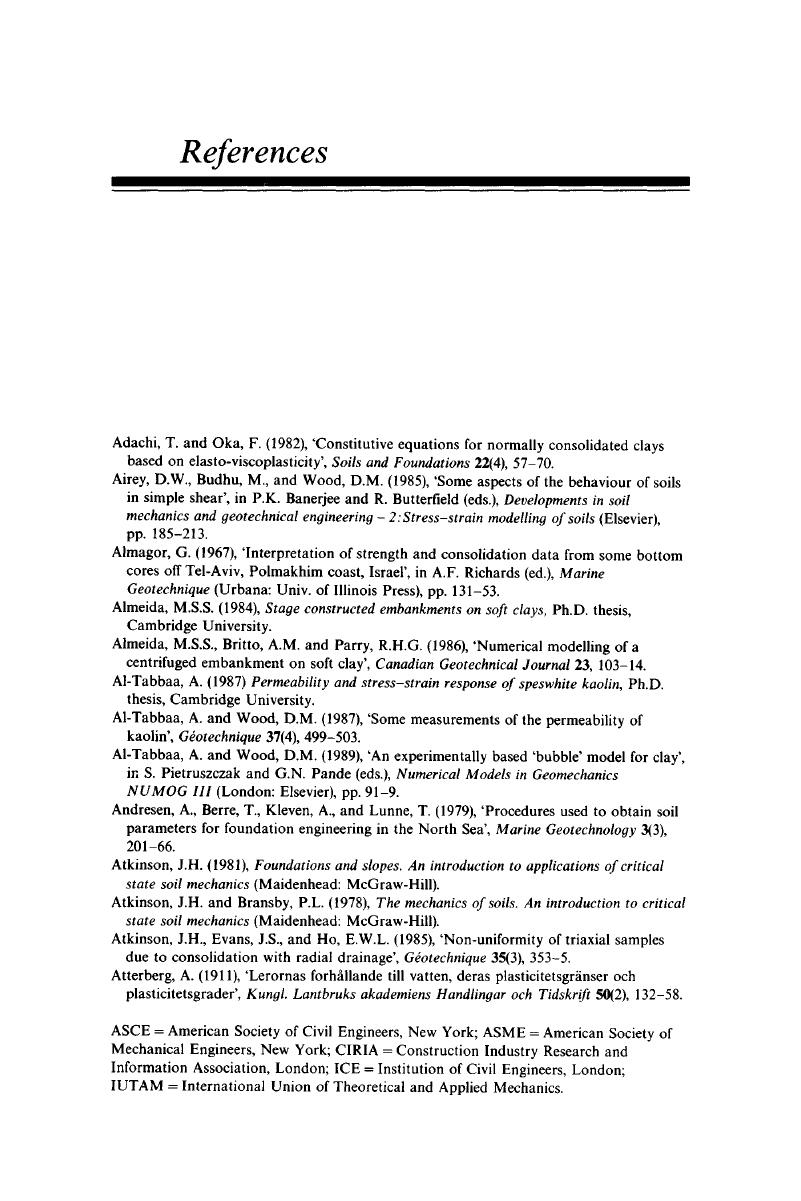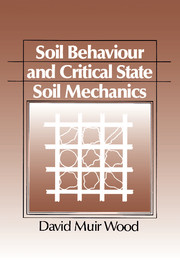Book contents
- Frontmatter
- Dedication
- Contents
- Preface
- Acknowledgements
- List of symbols
- 1 Introduction: models and soil mechanics
- 2 Elasticity
- 3 Plasticity and yielding
- 4 Elastic-plastic model for soil
- 5 A particular elastic—plastic model: Cam clay
- 6 Critical states
- 7 Strength of soils
- 8 Stress—dilatancy
- 9 Index properties
- 10 Stress paths and soil tests
- 11 Applications of elastic—plastic models
- 12 Beyond the simple models
- References
- Index
- References
References
Published online by Cambridge University Press: 05 October 2014
- Frontmatter
- Dedication
- Contents
- Preface
- Acknowledgements
- List of symbols
- 1 Introduction: models and soil mechanics
- 2 Elasticity
- 3 Plasticity and yielding
- 4 Elastic-plastic model for soil
- 5 A particular elastic—plastic model: Cam clay
- 6 Critical states
- 7 Strength of soils
- 8 Stress—dilatancy
- 9 Index properties
- 10 Stress paths and soil tests
- 11 Applications of elastic—plastic models
- 12 Beyond the simple models
- References
- Index
- References
Summary

- Type
- Chapter
- Information
- Soil Behaviour and Critical State Soil Mechanics , pp. 448 - 458Publisher: Cambridge University PressPrint publication year: 1991
References
- 1
- Cited by



